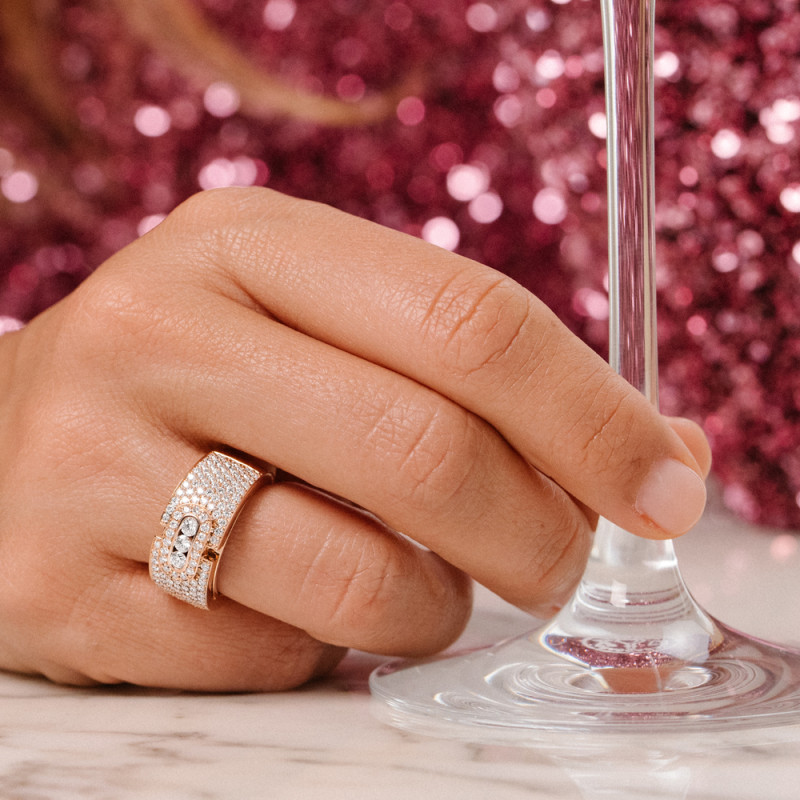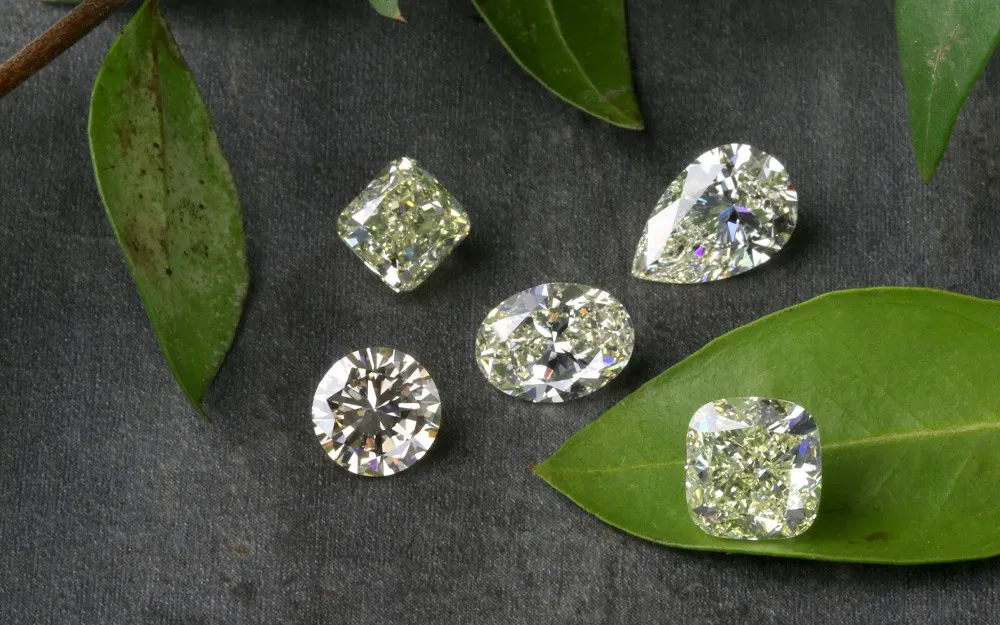What Are Moral Lab-Developed Diamonds?
In the realm of fine gems, there’s been a growing discussion around moral sourcing. At the core of this shift is the ascent of moral lab-developed diamonds — a progressive option in contrast to mined diamonds that not just proposition stunning excellence but at the same time are lined up with upsides of sustainability and common liberties. Yet, what precisely are moral lab-developed diamonds, and what difference would it be a good idea for them to make to you?
Understanding Lab-Developed Diamonds
Prior to diving into the morals, it’s fundamental to understand how these diamonds are made. Lab-developed diamonds are genuine diamonds, very much like those mined from the Earth. The key contrast lies in their origin. Instead of being removed from the Earth, lab-developed diamonds are created in a controlled laboratory climate using one of two main strategies: High Tension High Temperature (HPHT) or Synthetic Fume Statement (CVD). These techniques imitate the normal circumstances under which man made diamonds are shaped profound within the World’s covering.
What Makes a Diamond “Moral”?
A moral diamond alludes to a diamond that is delivered without causing damage to the climate or violating common liberties. Customary diamond mining, while at the same time producing lovely jewels, frequently involves damaging mining rehearses, human abuse, and struggle financing. Moral lab-developed diamonds, then again, intend to eliminate these issues, offering a dependable and sustainable other option.
How Are Lab-Developed Diamonds Made?
Creating a lab-developed diamond involves carefully replicating the outrageous tension and temperature conditions that exist normally in the Earth. In the HPHT strategy, a little diamond seed is set in a chamber, exposed to high strain and temperature, and takes shape into a bigger diamond. The CVD strategy, then again, utilizes a gas blend that, when warmed, stores carbon particles onto a diamond seed, bit by bit forming a diamond over the long haul. The two strategies produce diamonds that are artificially and actually indistinguishable from normal diamonds.
The Morals Behind Lab-Developed Diamonds
Since it is now so obvious what lab-developed diamonds are, how about we plunge into why they’re viewed as more moral. The moral allure of lab-developed diamonds to a great extent comes from their minimal ecological effect and the way that they don’t add to denials of basic freedoms or struggle financing.
Addressing the Ecological Effect
Mined diamonds are notorious for their natural cost. Diamond mining can involve huge scope deforestation, annihilation of biological systems, and contamination of neighboring water sources. Then again, lab-developed diamonds expect far less normal assets. While they really do utilize energy (depending on the strategy), the by and large natural effect is extensively lower. Besides, numerous lab-developed diamond organizations are investing in environmentally friendly power sources to additionally lessen their carbon footprint.
Avoiding Struggle and Common freedoms Issues
One of the greatest moral worries with mined diamonds is their association with struggle diamonds, otherwise called “blood diamonds.” These diamonds are in many cases mined in disaster areas under cruel circumstances, where benefits reserve savagery and denials of basic freedoms. Lab-developed diamonds are liberated from these affiliations, ensuring that your buy doesn’t inadvertently uphold struggle or double-dealing.
The Labor Behind Lab-Developed Diamonds
In customary diamond mining, laborers, including kids, are frequently exposed to hazardous, shifty circumstances. Conversely, the labor involved in producing lab-developed diamonds is more directed and commonly happens in more secure, more controlled conditions. This guarantees better working circumstances and fair wages for those involved in the production of these diamonds.
Advantages of Moral Lab-Developed Diamonds
Choosing moral lab-developed diamonds over mined diamonds offers a few vital advantages past being a superior decision for the planet and individuals. We should investigate why an ever increasing number of buyers are making the switch.
Eco-Accommodating and Sustainable
Lab-developed diamonds are viewed as more eco-accommodating on the grounds that they don’t need the enormous scope removal of the Earth. While no manufacturing cycle is totally liberated from natural effect, lab-developed diamonds are a sustainable decision in contrast with customary mining, which frequently prompts boundless living space obliteration and durable ecological harm.
Struggle Free Assurance
As referenced, one of the main benefits of moral lab-developed diamonds is that they are ensured struggle free. This implies that regardless of where the diamond was made, you can have confidence that it didn’t support savagery, double-dealing, or other deceptive practices.
Top notch and Reasonableness
Lab-developed diamonds have a similar substance structure, hardness, and appearance as mined diamonds, making them an excellent other option. Since the creation of lab-developed diamonds is more effective, they are in many cases more reasonable than their mined partners. This permits buyers to buy bigger or more extravagant diamonds within their spending plan.
Lab-Developed Diamonds versus Mined Diamonds
While considering a diamond, it’s essential to gauge the distinctions between lab-developed and mined diamonds. While the two choices offer magnificence, strength, and ageless allure, their disparities go a long ways past appearance.
Cost Examination: Lab-Developed versus Mined
One of the most noticeable contrasts between lab-developed and mined diamonds is the cost. Mined diamonds, because of the complex and asset intensive course of extraction, can be altogether more costly than lab-developed diamonds. The expense of a mined diamond includes not simply the actual jewel yet in addition the related expenses of mining, transportation, and once in a while, exploitative practices. Lab-developed diamonds will generally be more reasonable, making them an appealing choice for buyers who need quality without the heavy sticker price.
Ecological Effect: Lab-Developed versus Mined
As examined before, the ecological effect of customary diamond mining is a lot more prominent than that of lab-developed diamonds. Mining exhausts normal assets, adds to territory obliteration, and produces a lot of waste. Lab-developed diamonds, conversely, are created in controlled conditions with minimal disturbance to the regular world, making them the more earth dependable decision.
The Social Obligation Perspective
Mined diamonds have for some time been related with denials of basic freedoms, for example, constrained labor and youngster labor in mining networks. Lab-developed diamonds eliminate these social worries, offering a more moral decision for shoppers who need to have an effect with their buy. By choosing a lab-developed diamond, you are not supporting destructive working circumstances or viciousness.
The most effective method to Recognize a Moral Lab-Developed Diamond
While all lab-developed diamonds are inherently more moral than mined diamonds, it’s fundamental to guarantee you’re purchasing from a legitimate source. Here are a few hints on the most proficient method to detect a moral lab-developed diamond:
Confirmation and Grading Measures
Very much like mined diamonds, lab-developed diamonds are reviewed according to the 4 Cs — carat, cut, variety, and clearness. Be that as it may, moral brands will likewise offer accreditations from perceived grading bodies like the Gemological Institute of America (GIA) or the International Gemological Institute (IGI). These affirmations confirm the quality and validness of the diamond.
Where to Buy Moral Lab-Developed Diamonds
To guarantee you’re purchasing a moral lab-developed diamond, buy from believed retailers who have some expertise in moral gems. Search for organizations that are transparent about their sourcing and creation rehearses and give accreditations to their diamonds.
Normal Fantasies About Lab-Developed Diamonds
Regardless of their many benefits, a few legends persevere about lab-developed diamonds. We should expose a couple of the most widely recognized confusions.
They’re Not Genuine Diamonds
Certain individuals erroneously accept that lab-developed diamonds aren’t “genuine” diamonds. Truly, lab-developed diamonds are artificially indistinguishable from mined diamonds. The main contrast is their origin. They are genuine diamonds in a literal sense.
They Aren’t as Important
Another normal legend is that lab-developed diamonds need esteem. Notwithstanding, while they might be more reasonable, they actually hold huge worth concerning quality, craftsmanship, and magnificence. The lower cost is a consequence of the more proficient creation process, not lower esteem.
Lab-Developed Diamonds Need Character
Some contend that lab-developed diamonds are less novel or miss the mark on character of mined diamonds. Nonetheless, every diamond, whether filled in a lab or mined from the Earth, is a novel creation. Lab-developed diamonds arrive in different shapes, tones, and sizes, and their magnificence is similarly just that compelling of mined diamonds.
The Eventual fate of Moral Lab-Developed Diamonds
As the demand for additional moral and sustainable items develops, the fate of lab-developed diamonds looks promising. More shoppers are choosing eco-accommodating, struggle free choices, and lab-developed diamonds are becoming an increasingly well known decision for commitment, weddings, and other huge life altering situations.
The Growing Prominence of Moral Decisions
With the ascent of buyer awareness about natural and social issues, lab-developed diamonds are becoming a mainstream decision. As twenty to thirty year olds and Gen Z continue to focus on sustainability and morals, the demand for lab-developed diamonds is probably going to continue growing.
Innovations in Lab-Developed Diamond Innovation
The innovation behind lab-developed diamonds is advancing quickly. With innovations like superior development processes, better energy effectiveness, and new cutting strategies, the fate of lab-developed diamonds guarantees significantly greater items at additional serious costs.
Conclusion: Why Moral Lab-Developed Diamonds Matter
Ethical lab-grown diamonds offer a beautiful, sustainable, and responsible alternative to traditional mined diamonds. They provide all the same sparkle and brilliance without the environmental destruction, human rights abuses, and conflict associated with mined diamonds. Whether you’re looking for an engagement ring, a gift, or simply a piece of jewelry that aligns with your values, ethical lab grown diamonds are a choice you can feel good about. By choosing them, you’re not only getting a stunning piece of jewelry—you’re supporting a future where the earth and its people come first.



)



)







